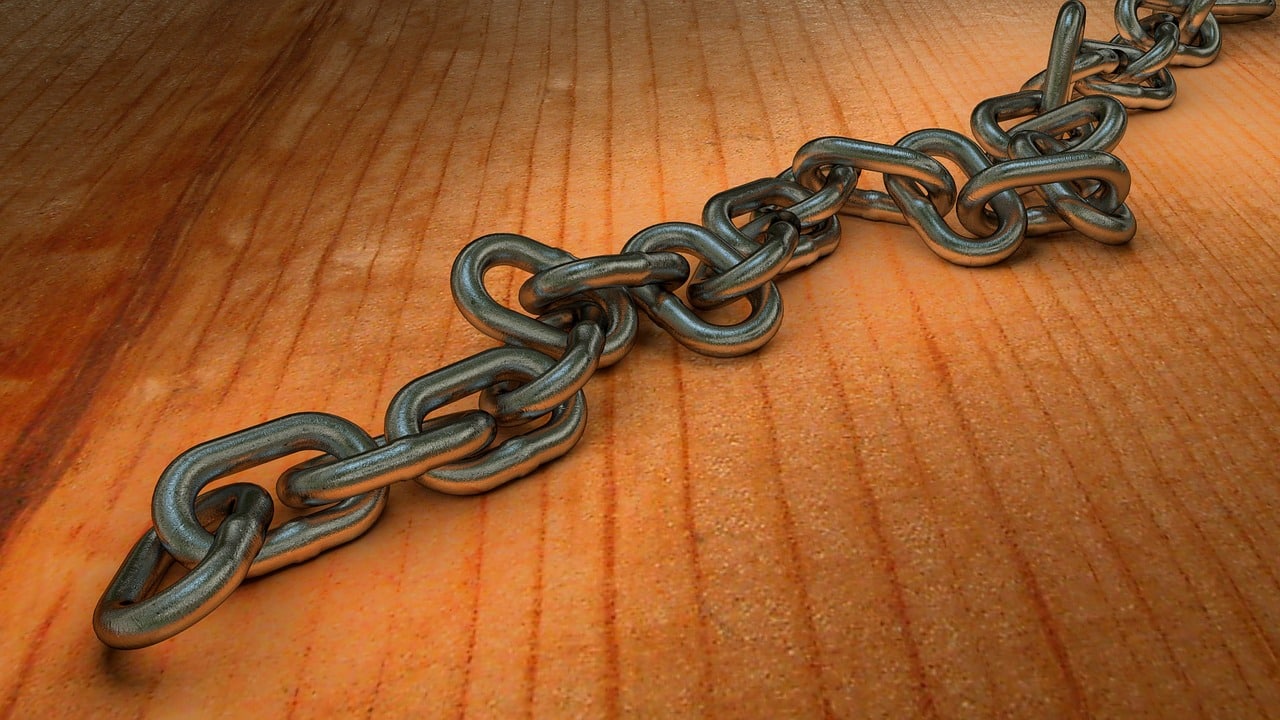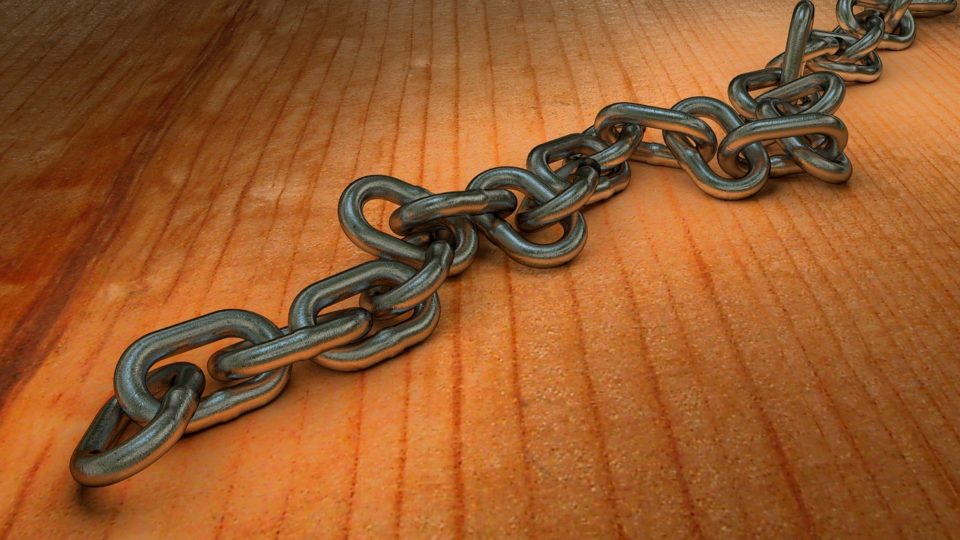There is no question that as digital marketers and business owners, we love when websites link back to ours. More links mean more online presence, awareness, and hopefully, profits!
When a customer lands on your website because someone else referred them to you, that means that they are more likely to trust you. The same goes for search engines.
However, there is such a thing as a bad backlink. If you have spammy or unrelated websites linking back to yours, it may be time to clean up your backlink profile or risk a drop in your organic traffic.
What is a Backlink Profile?
A backlink is a website that publishes a link back to your website, and a backlink profile is a group of all the websites on the internet that link to your content.
Google favors websites that have a strong backlink profile because it demonstrates that they are trustworthy and offer valuable information. It helps the algorithm understand that a website is relevant.
The more domain authority (DA) that a referring website has, the more Google will trust the referred site and in turn, increase its page ranking. In short, you want other websites to link to yours. Good websites.
What is the Difference Between a Good Backlink and a Bad Backlink?
The difference between good and bad backlinks comes down to the quality of the website that is linking to yours. In the eyes of the almighty Google, a bad backlink is unnatural… not organic. And it can detect when a site is breaking the rules.
Penguin, which is part of Google’s core algorithm (released in 2012), targets and penalizes two specific unnatural practices, link schemes, and keyword stuffing. Come 2016, Penguin was operating in real-time, which means that Google is now able to catch and penalize websites with artificial backlink profiles faster and more efficiently.
In terms of the quality of your backlink profile, link schemes can involve the creation, attainment or purchase of backlinks from low-quality and/or irrelevant websites with the intent of ranking on Google by appearing popular and relevant.
But it’s just a fabrication; they aren’t actually authoritative websites.
So, when one of these websites links to yours, you are now connected with it online, even if you have no real association with it. That’s a bad backlink.
Google also detects low-quality links by way of manual actions, which is when a human reviewer identifies pages on a site that aren’t compliant with Google’s guidelines.
Manual actions tend to address attempts to alter Google’s search index to trick their way to the top of the SERPs. While the algorithms are extremely capable of automatically detecting spam, manual actions are sometimes necessary.
When Penguin detects an issue, it will automatically lower your rankings and thus your organic traffic. With manual actions, you will at least get a warning.
Needless to say, backlinks are a HUGE factor in any site’s ranking.
Finding Bad Backlinks
There are several methods you can follow to find and clean up links that may affect your Google rankings, but a manual job is almost always best. First, you should understand what an unnatural link could look like.
If you’re reading this as a digital marketer, chances are you have had your hands in a few content management systems (CMS). While some come with anti-spam plugins, they’re not perfect.
We’ve all witnessed those spammy comments with links for ‘cheap NFL jerseys’ and other random things that have literally NOTHING to do with our website. This would be an example of an unnatural link intended to boost the ranking of the linked site.
A bad backlink within your profile will be obvious; the full URL of the linking page may be the epitome of spam, with lots of jumbled letters and numbers rather than a search engine optimized link.
In other cases, it may not be so obvious, but a simple visit to the site (with discretion) is enough to give you clarity. Low DA or strange top-level domains are also indicators.
You may also find bad backlinks by observing a referring domains graph, which may identify a sharp spike in links as a result of link spam. While we’d hope that a spike in referring domains is a good thing, it doesn’t always indicate virality.
Make a List of Your Backlinks
The first thing you need to do is analyze the quality of your backlinks, and to do so, you need to make a clear list of them.
Head to Google Search Console and navigate your way to Links. Here, you will find a list of all the Internal Links (pages in your property linked from other pages in your property) and External Links (pages in your property linked from external pages). Click More in the External Links box.
You will next be given a list of the Top Target Pages on your site from highest linked pages to lowest linked pages. If you click on any of your pages and posts, you will be presented with yet another list consisting of the Top Sites Linking to This Page.
If you get a lot of traffic from Pinterest, for example, you will see several instances of pinterest.[country code], mixed in with other domains that are linking to your website. Click on any of the site names to find the exact Linking Page that refers to your website.
You can visually scan all these links and take note of anything funny looking, or you can export a report from any viewing level to review the list in Google Sheets or MS Excel. We would recommend running a report so you can build a database of all your backlinks.
Audit the List
Next, evaluate the quality of each link. To do this, you may have to visit websites in question to determine if they are still active or if their content is at all relevant to yours.
Remember, you don’t want to get rid of all backlinks – just the ones that Google will consider low-quality. If they would be considered in good standing with Google and their site is kinda-sorta off base niche-wise but the reference makes sense, leave it alone. If the site reeks of artificial flavoring and is about motorcycles while yours is about makeup hacks, they’re not exactly favorable.
Cleaning Your Profile
Once you have cleaned up your list and know whom you want to keep and who’s got to go, it’s time to kick them to the curb.
1. Ask the Website Owner
While this may seem like a silly suggestion, it’s effective, when you are polite about it. Don’t go storming their inboxes with demands and threats because that is a fast-track way to be ignored or to piss someone off. If the answer is a big fat NO or if you are left on ‘read,’ you can disavow the link instead. But first, always ask.
2. Disavow with Google Search Console
If asking nicely doesn’t work, you take the alternative route.
Google Search Console’s (formerly Webmaster) Disavow Tool allows website owners to discount the value of an inbound backlink to avoid receiving penalties for unnatural links. While Penguin cleans up shop well, you may still find a need to use the tool.
Deciding what to disavow is the hard part; the actual process is simple.
Step 1: Decide whether to disavow. Choosing which links should stay and which should go can be a complicated process, especially because there is no guaranteeing whether those “iffy” links are doing you more harm than good. But, if the link doesn’t serve your website or your readers any purpose, it probably doesn’t belong on your backlink profile.
If you receive a notification in Google Search Console that your site may be affected by a manual action due to a bad backlink, you should absolutely disavow. Why? Because a real, live human has personally reviewed an unnatural website and has confirmed that your site is connected to a spam site. We definitely don’t want that.
You can check to see if your domain has any manual actions by going to Google Search Console, selecting Security & Manual Actions, and Manual Actions.
When should you disavow a link? According to Google, you should only disavow a backlink when you think you have a considerable amount of fake, spammy, or low-quality links pointing to your website, or when links have caused or may cause a manual action on your site.
Step 2: Create a disavow file. A disavow file is a list of all the URLs that you want Google to essentially ignore. When Google is determining your website’s rank and authority, they will not take those links into consideration. Your list must be on a text file (encoded in UTF-8 or 7-bit ASCII) with one URL to disavow per line.
Once you have created your list, visit this link and select your domain from the dropdown menu.
Click Disavow Links and Choose File to upload your (*.txt) file.
According to Google, it can take a few weeks to process the information that you upload. When it is, it will be added to their index as they recrawl the web and reprocess the pages that they see.
As digital marketers, we understand the importance of SEO, so it is essential that we keep a sharp eye on our backlink profiles to avoid penalties!

